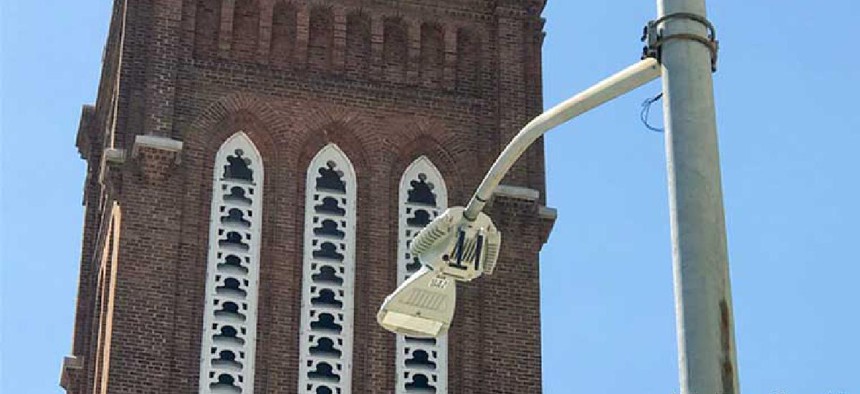Portland installing 200 sensors to improve traffic safety

The sensor network will gather data on vehicle and pedestrian traffic to help city officials understand the causes of fatal accidents.
Portland, Ore., is setting up a network of 200 sensors to gather data on vehicle and pedestrian traffic to help officials learn how to prevent fatal accidents.
The Traffic Safety Sensor Project places CityIQ sensor nodes in the city’s “high crash network.” These 30 streets that account for more than half of the city’s traffic fatalities even though they make up only eight percent of the city’s roadways, according to Dylan Rivera, a spokesperson for the Portland Department of Transportation.
Attached to existing street light poles, the nodes have more than 30 built-in sensors, including two cameras that take images of the roadway and sidewalk and an array of environmental sensors for measuring temperature, pressure and humidity.
None of the data leaves the sensor node, though. Intel chips power computer-vision analysis in the units and produce metadata featuring traffic and pedestrian counts along with time and location stamps. The metadata is sent over an AT&T LTE network to the GE Predix industrial internet cloud where it can be accessed through application programming interfaces, according to Austin Ashe, the general manager of intelligent cities at Current by GE, the company supplying the sensors.
Dozens of the sensors have already been deployed, and the entire network is expected to be streaming data by the end of July, Ashe said.
The city will collect data for more than a year, which will give it insights that could help determine where to place crosswalks or other safety features, Rivera said.
While Portland is initially focusing on eliminating traffic fatalities, the nodes' cameras could be used to collect data on parking and bicycles, and the environmental sensors can contribute data to air quality analysis and sustainability initiatives. Software updates will allow the city will be able to add additional functionality over time, Ashe said.
The APIs will give the city's data scientists access to the data in near real time. Current by GE is also working to build an ecosystem of application providers that will develop software that leverages this data and expands the flexibility of the sensor network, Ashe said.
To manage the data from the sensors, the city and regional partners are working to build a cloud-based data lake. PUDL, or the Portland Urban Data Lake, will collect, store integrate and analyze data from a variety of sources -- including the traffic sensors.
The Traffic Safety Sensor Project "will get us better data on transportation to help us make better decisions for safety,” Rivera told GCN. “But we acknowledge that there is potential for more uses of the data that we don’t understand quite yet, and we will discover as we see the results of the data.”





